

Packing the cooler in the back of the car always marks the beginning of an exciting adventure. And there’s nothing better than enjoying your favorite chilled beverage as you take in a scenic view. But purchasing a cooler can be a pricey endeavor, especially if you are looking for the best of the best.
Videos by Outdoors
In this guide, we’ve chosen a selection of the best camping coolers available now. We looked for highly rated products that are suitable for the outdoors, with key features such as good ice retention, insulation, and durability.
Some people may be skeptical about Yeti as a brand (mostly because of the price), but there’s not many that deny the effectiveness of the Yeti Roadie as a great cooler for camping. The Roadie, our top pick, is spacious, strong, and easy to transport, making it a wonderful choice for lots of situations.
This post contains affiliate links. Outdoors.com may earn a commission when you make a purchase through these links. Thank you for your support.
The 6 Best Coolers for Camping 2024
- Best Overall: Yeti Roadie
- Best Compact: Igloo Ecocool Latitude
- Best Budget: Coleman Xtreme
- Best Lightweight: RTIC Ultralight 52
- Best All Terrain: RovR RollR
- Best Heavy Duty: Cordova Basecamp Class Hard Cooler
Best Overall: Yeti Roadie
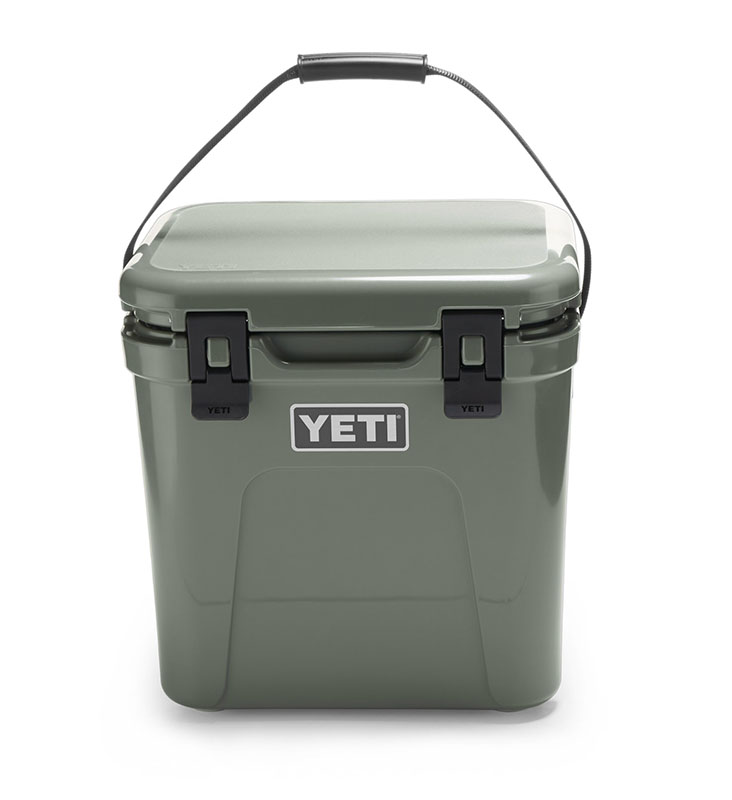
Specs
- Sizes available: 24, 48, and 60 quarts
There’s a lot to like about Yeti as an outdoors brand, and it is certainly one of the biggest players on the camping cooler market.
The Roadie cooler comes in three sizes, the 24, 48, and 60. The larger of the two coolers are on wheels, whereas the 24 comes with a carry strap.
Starting at $250, the Roadie is certainly not the cheapest option out there, but it is one of the best on the market at ice retention and is well regarded for keeping food and drinks cool for long periods in the sun. The Yeti is built tall, so all sizes can accommodate standing bottles of wine.
Plus, the eye-catching design and vibrant colors always make Yetis a popular and joyful choice for many situations. From canoe trips to tailgates, camping trips to road trips, the Yeti roadie is a great adventure buddy.
Best Compact: Igloo Ecocool Latitude
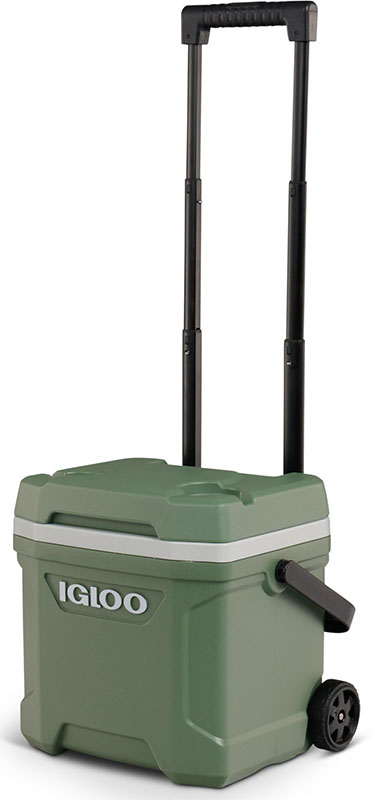
Specs:
- Sizes available: 16, 30, 52, 60, and 90 quarts
For a day cooler that doesn’t take up too much space, the Igloo Ecocool Latitude 16 is a very handy, portable cooler. It can hold up to 24 cans, and it has wheels, a telescoping handle, and an additional bail handle for easy mobility.
Reviewers mention that it rolls smoothly and is easy to push or pull around. With foam insulation, it has great cooling performance, perfect for storing cold beverages. The two cup holders on the lid are another great feature.
The Ecocool Latitude is made in the USA from recycled materials. It scores extra points for its sustainability. Igloo has several great value options available, including soft coolers and even a backpack cooler.
Best Budget: Coleman Xtreme
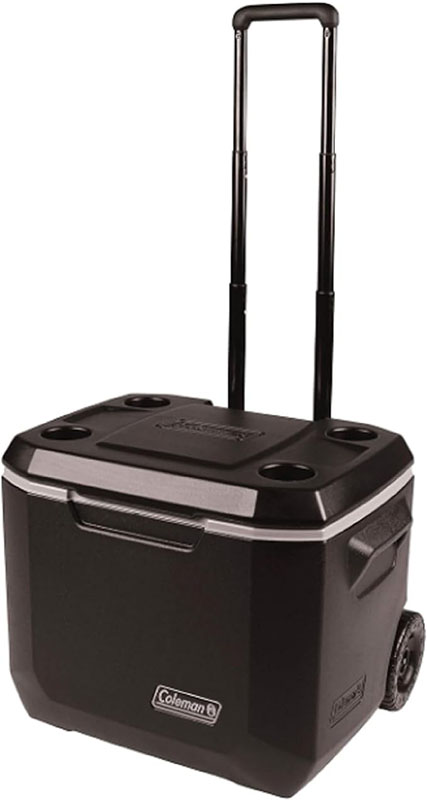
Specs:
- Sizes available: 50 and 70 quarts
The official cooler of the National Park Foundation, the Coleman Xtreme is another great value option that boasts five-day ice retention at temperatures up to 90 degrees Fahrenheit. There are currently two sizes on offer, the 50-quart cooler or the 70-quart cooler.
Its insulated lid allows items to stay cool, and the smaller 50-quart size can hold up to 84 cans. The lid has two cup holders, which is always handy for placing down your favorite beverage.
Reviewers noted that the Coleman kept their perishable items chilled for long periods of time, and they also liked the ease of movement with robust roller wheels.
A couple of campers had issues with the quality of the telescoping handle, but for its price and generous size, this large cooler is still great for camping trips.
Best Lightweight: RTIC Ultralight 52
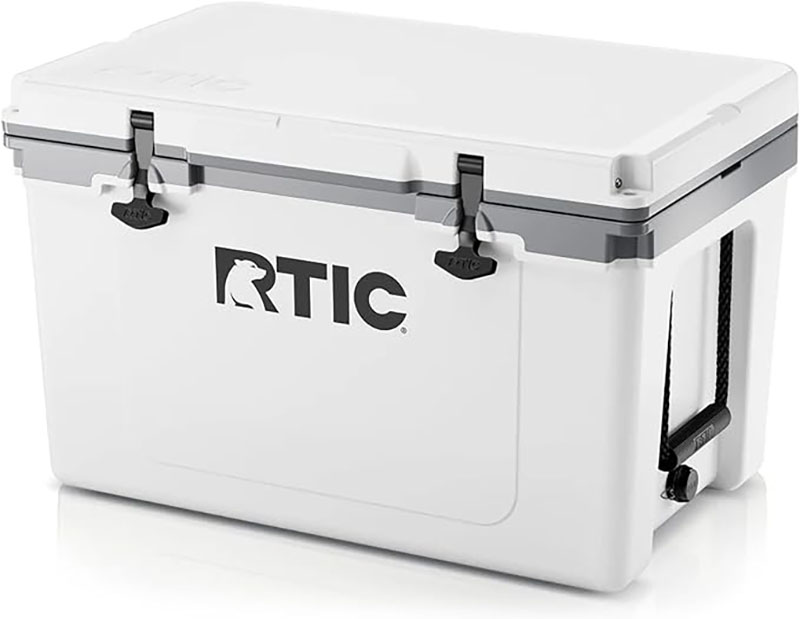
Specs:
- Sizes available: 20-128 quarts
The RTIC Ultralight 52 is a versatile and lightweight option that many camping enthusiasts rate very highly.
The cooler is a valuable camping companion with 50-quart capacity that can hold all the drinks and snacks you might need for a camping trip. With two drain plugs and rubber latches, it has capacity for 76 cans or 51 pounds of ice. The lid can be converted into a table or a cutting board.
You can buy wire baskets separately to place inside, which can be useful for organizing items in the cooler. This one comes in a lovely range of color options.
It weighs around 21 pounds, which is supposedly 30% lighter than most large rotomolded coolers on the market. It has rope handles on either side, allowing you to carry it with ease. Please note that this model does not have wheels.
Best All Terrain: RovR RollR
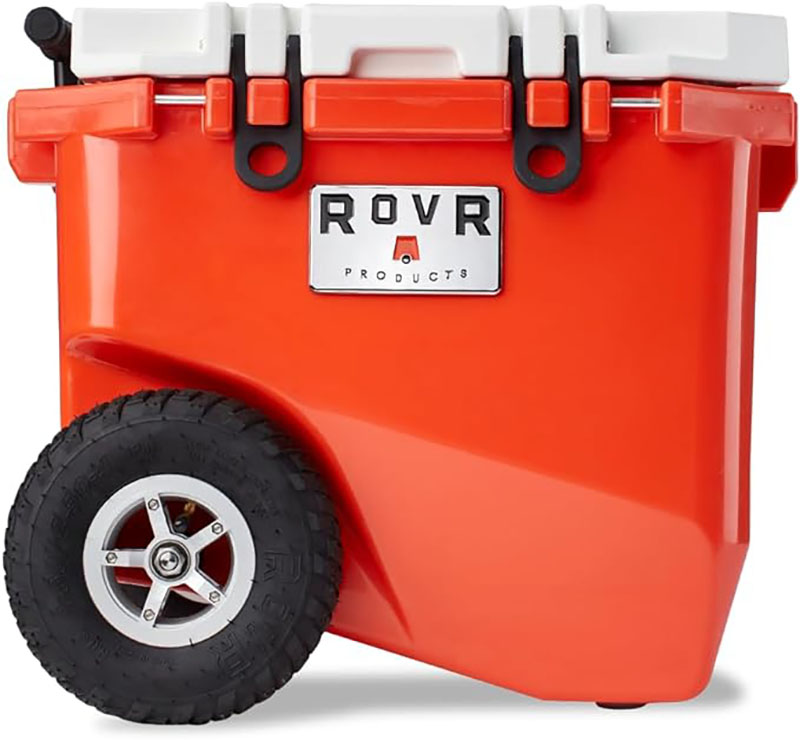
Specs:
- Sizes available: 45, 60, and 80 quarts
This beast of a cooler has 9-inch, all-terrain tires, making it easy to transport over gravel, grass, sand, or any other challenging surfaces. Hardy, durable, and bear resistant, it is portable even when it is full of drinks and perishables. It is also available in either 60 or 80-quart capacity.
It can hold ice for several days. Most reviewers estimated 2-3 days, although the manufacturer claims it can keep ice for 7-10 days.
It comes with an internal deepfreeze dry bin and tote, prep board, cup holders, and there are more add-ons available that are not included in the price. One of these is an attachment for your bike.
The price point is high at almost $430, but if you are willing to part with the cash, it’s a durable cooler that is widely respected in the outdoors community.
Best Heavy Duty: Cordova Basecamp Class Hard Cooler
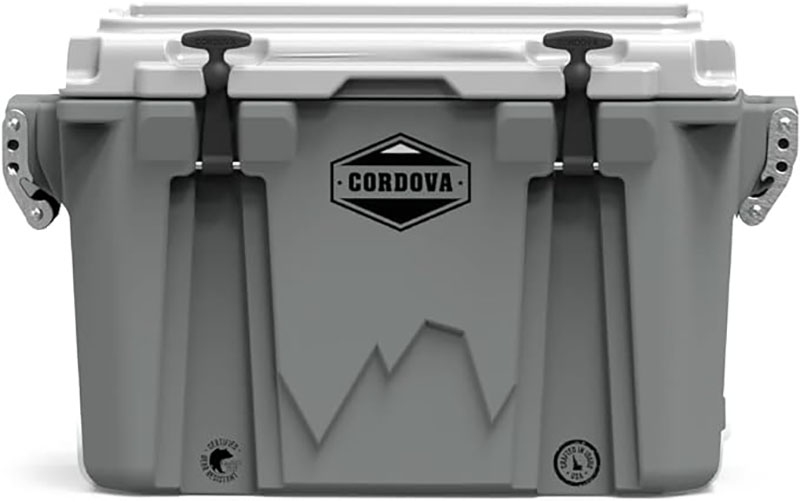
Specs:
- Sizes available: 20-128 quarts
Proudly made in America in Idaho’s Treasure Valley by a former Navy Seal and a pilot, the Basecamp Cooler is a rugged and reliable cooler.
It has some exciting features, including “top loader” latches that make it easy to open, anodized aluminum handles that reportedly do not rust, and it is certified bear resistant. We liked the built-in bottle opener on the handle.
There are lots of stylish designs to choose from, too.
Buyer’s Guide: How to Find the Best Cooler for Camping
A great cooler should provide you easy access to all of your favorite things while you’re on the go. You will need to consider the size and space you have available and the amount of time you will be spend transporting it from A to B.
Here are some more considerations to look out for when you are making the purchase.
Capacity and Size
The capacity of the cooler will depend on the details of your trip, including the storage space available, the number of campers, and the duration of the trip.
As a general guideline, a 25-50-quart cooler is suitable for 1-2 people, while a larger cooler in the 50-100+-quart range may be needed for larger groups or longer trips.
The capacity of most coolers is measured in quarts, but you can also find out how many cans it can hold in the product description, which should give you a good idea of how much it can hold.
Before you go camping, plan out the food quantities, number of drinks, and items that need to be chilled. This will give you an idea of what size cooler will work best for your camping trip.
Insulation
Most coolers will feature efficient insulation that allows the contents to stay cool for days at a time. Foam insulation is used to retain cold temperatures.
Take note of the lid design and sealing mechanism, as this can also contribute to the effectiveness of the insulation. A good seal will prevent warm air from entering the cooler when it is exposed to hot surfaces.
Ice Retention
Another important feature to look out for is ice retention. Brands will usually offer an estimate, which normally ranges from around 3-5 days. Check reviews and product specifications for information on how long the cooler can keep ice frozen.
This is particularly important for longer camping trips where you’ll need to keep perishable items cold for several days.
Durability
If you are taking the cooler on an outdoor adventure, it needs to be able to cope with rough handling and exposure to the elements.
The coolers we’ve chosen are made from durable materials that are known for their ability to withstand bumps, drops, and exposure to the sun and water. Look for coolers made from sturdy materials like rotomolded plastic or metal.
Portability
Consider the weight and size of the cooler, especially if you’ll be carrying it over long distances or hiking to your campsite. Look for features like comfortable handles or shoulder straps for easier transport.
Many coolers have wheels and/or a telescopic handle for portability, which allows you to pull or push them around like a suitcase, which can be great for camping.
Additional Features and Add-Ons
Consider any additional cooler features that may be beneficial for your camping needs, such as built-in cup holders, cutting boards, or drainage systems.
Budget
The camping coolers on this list are priced between $50 and $450. The best choice for you will depend on several factors, including your camping preferences and other activities you might use the cooler for.
Keep in mind that higher-quality coolers with better insulation and durability may come with a higher price tag, but they can be worth the investment for frequent campers. If you don’t camp very often, start with a budget-friendly option before you commit to an expensive cooler.
Reviews and Recommendations
Before making a purchase, read user reviews from other campers to learn about their experiences with specific coolers and to see how they perform in the real world.
Recommendations from friends or online forums can also help you make an informed decision. Pay attention to feedback on durability, insulation, and overall performance.
Brand Reputation and Warranty
Consider the reputation of the manufacturer. Established outdoor brands, such as Yeti, Coleman, and Igloo have a history of producing reliable products.
Check the warranty coverage and customer service reputation of the cooler manufacturer. A good warranty can provide added peace of mind and protection against any defects or issues with the cooler.
Cooler Tips and Tricks
Keep these tricks in mind when you’re taking a cooler on your next camping trip.
- Use block ice or frozen water bottles inside the cooler. Pack items tightly together with the most perishable items at the bottom.
- Keep the cooler in the shade when possible to prevent its contents from warming up due to ambient temperature fluctuations.
- For long group trips, use two coolers—one for food and one for drinks. The drinks cooler will be opened more frequently, so by having them separated, the food cooler can stay cold for longer.
- Limit opening the cooler as much as possible to maintain cold temperatures.
- Freeze as much of your food as possible before packing. Remember that milk, pasta sauce, bread, burger patties, and tortillas can all be frozen in advance.
Frequently Asked Questions
What is a rotomolded camping cooler?
A rotomolded cooler (short for rotationally molded cooler) is a type of cooler constructed using a rotational molding process. This manufacturing technique involves melting plastic resin in a hollow mold that is rotated on multiple axes. As the mold rotates, the molten plastic coats the interior surface evenly.
Rotomolded coolers are generally on the pricier side but are considered worth the extra cost due to their superior insulation, durability, and ice-retention capabilities.
They’re ideal for frequent campers or those who require longer cooling durations and can withstand rough outdoor conditions better than traditional coolers.
What’s the best way to secure my camping cooler to prevent animals, like bears, from accessing it?
You might notice that some coolers, such as the RovR RollR and the CordovaBasecamp are certified “bear resistant.”
This means that these coolers are designed specifically to withstand attempts by bears to access the contents. They may feature reinforced materials and locking mechanisms that can be tricky for bears to break into.
It is always wise to use airtight containers or bags to store food inside the cooler. Always clean it thoroughly after each use to remove any lingering smells.
Can I use my camping cooler for both hot and cold items?
Yes. In addition to keeping items cold, coolers can also help keep warm dishes hot. Line the cooler with towels or blankets, and place hot dishes inside to retain heat.
Consider using separate compartments or containers within the cooler to keep hot and cold items separate and prevent cross-contamination. This can be especially important for storing perishable foods alongside hot dishes.
What else can I use my camping cooler for?
The options are endless. Although you might be thinking about buying a cooler for camping, you will find that it is a versatile purchase that can be handy for several situations.
From tailgating to beach days, picnics to dinner parties, coolers are always a handy piece of gear to have around. You can also use them for storing food and drinks during DIY projects or moving to a new house.
For shorter day trips, you might consider purchasing a soft cooler, which is lighter and easier to carry around.
The Best Camping Cooler
Coolers come in many shapes and sizes, and choosing the right one for your needs requires some research.
The Yeti Roadie is a classic choice, in our opinion. And we’re not just saying that because we like the fun colors—we promise. It is the perfect camping companion that combines practicality, style, and durability, and it will fit everything you need for the journey.
From large gatherings to epic camping adventures, there’s a cooler out there to suit any kind of outdoor experience.

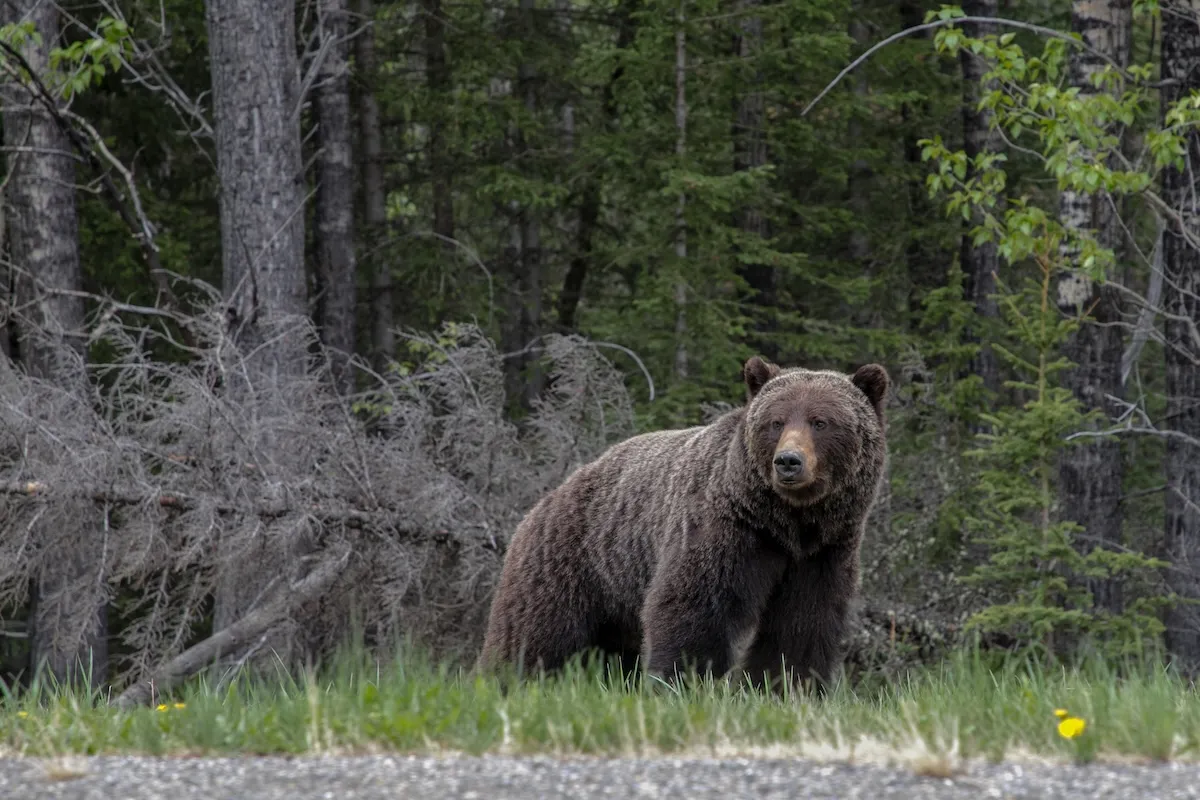

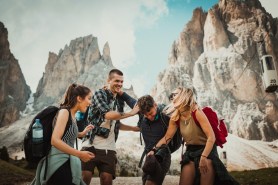
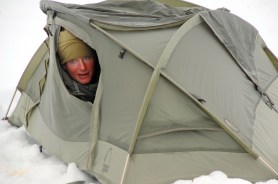
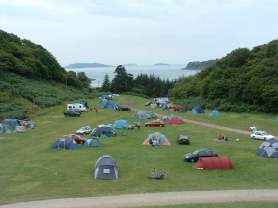
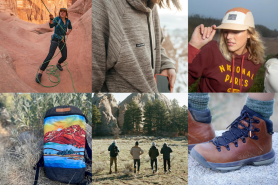
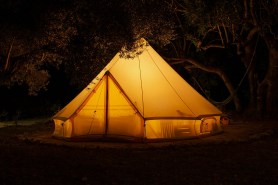
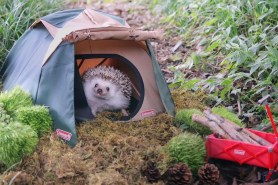

Pingback: 7 Insulated Cool Boxes for Camping That Keep Ice All Weekend
Pingback: Why the Extra Large Cooler Is a Game Changer for Camping
Pingback: Essential Features Every Large Plastic Cooler Should Have